We are a production company with 5 factories spanning Vietnam, covering 50,000 m², producing high-quality products using advanced technology and strict quality control. Our strategic locations in Vietnam enable us to cultivate a diverse range of crops year-round.
Don't wanna be here? Send us removal request.
Text
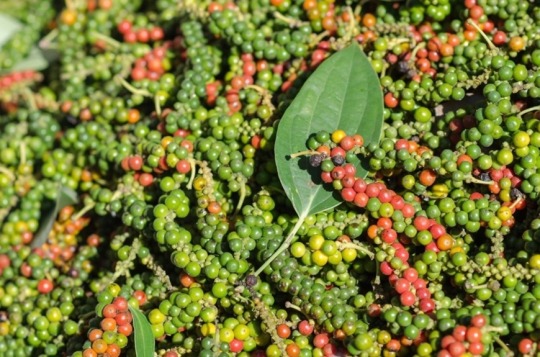
🌿 Pepper Market Update 2025 - Harvest Season, Prices Surge! 🌿
🔹 Harvest Season: Farmers in Đắk Nông, Đắk Lắk, and Gia Lai have entered the 2025 pepper harvest. Yield is slightly lower due to unpredictable weather conditions.
🔹 Domestic Prices: 📈 Prices surged in early February!
Đắk Lắk: 150,000 VND/kg
Đắk Nông: 151,500 VND/kg
Gia Lai: 150,000 VND/kg
🔹 Export Prices: 🚢 Latest export prices:
Black Pepper 500 gr/l: $6,350/MT
Black Pepper 550 gr/l: $6,650/MT
White Pepper: $9,550/MT
💡 Forecast: Prices are expected to remain high due to limited supply & strong demand from major markets like the US and China!
📩 For Orders & Inquiries: 📧 Email: [email protected] 🌐 Website: tuanminhexport.com
👉 Stay updated & plan your sales strategy accordingly! 🚀📊
#Pepper #PepperPrices #Agriculture #Export #Harvest2025
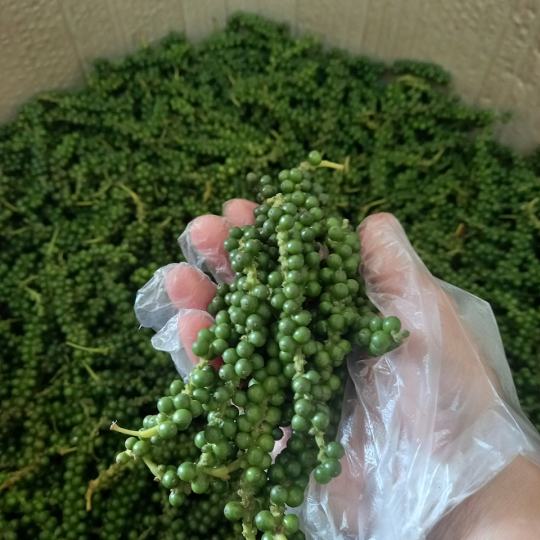
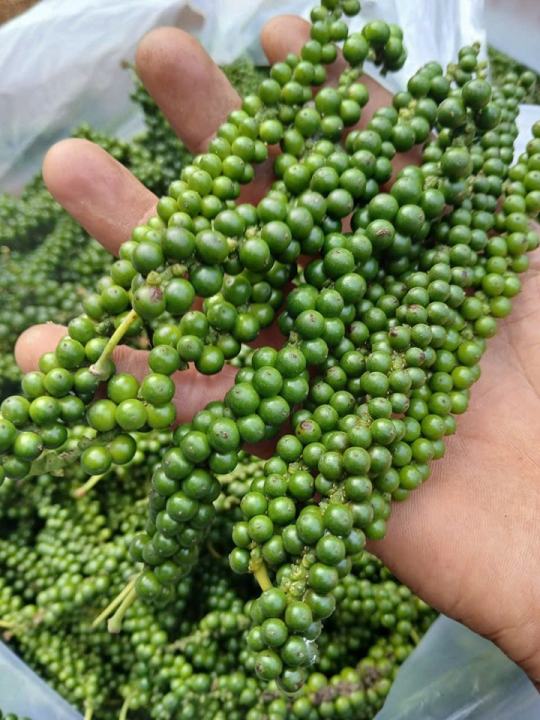
0 notes
Text
Vietnam’s Coffee Harvest Season – The Aroma of the Highlands
Late in the year, Vietnam’s coffee-growing regions like Đắk Lắk, Lâm Đồng, and Gia Lai enter their peak harvest season from October to December, producing high-quality coffee for domestic and international markets. Coffee Prices During Harvest Season Prices often drop due to oversupply but depend on factors like product quality, market demand, storage strategies, and macroeconomic elements such…
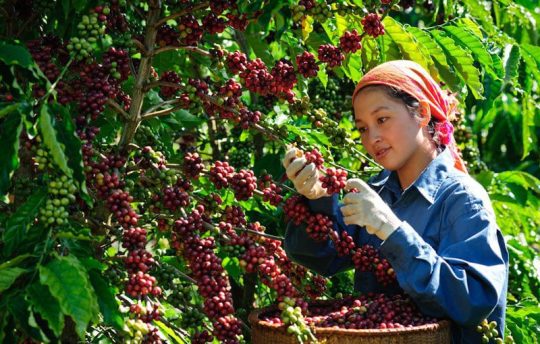
View On WordPress
0 notes
Text
"Vietnamese Ginger Season – Bold Flavor, Conquering Global Markets"
🍂 Vietnamese Ginger Season – Premium Quality, Bold Flavor! 🍂 🌟 From September to December, it’s prime season for Vietnamese ginger – perfect for fresh ginger, dried ginger, ginger powder, and more. Especially popular is Nghe An ginger, known for its strong aroma and high essential oil content, making it a top choice in markets like Australia, India, Bangladesh, and across Europe. Vietnamese…
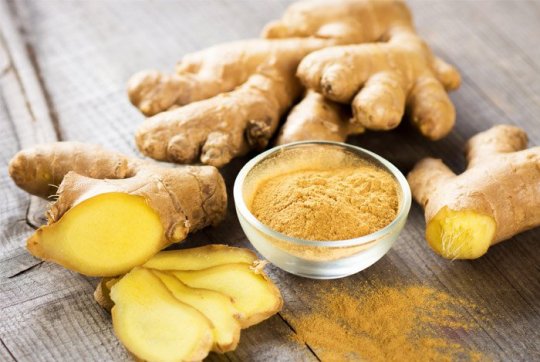
View On WordPress
0 notes
Text
🍂 Vietnamese Ginger Season – Premium Quality, Bold Flavor! 🍂
🌟 From September to December, it's prime season for Vietnamese ginger – perfect for fresh ginger, dried ginger, ginger powder, and more. Especially popular is Nghe An ginger, known for its strong aroma and high essential oil content, making it a top choice in markets like Australia, India, Bangladesh, and across Europe. Vietnamese ginger sells for around 9-13 AUD/kg in Australia, showcasing its competitive edge.
📈 In the first 9 months of 2024, Vietnamese ginger exports reached nearly USD 45 million – a slight dip in volume but a significant rise in value. Compared to other sources, Vietnamese ginger is gaining traction globally.
👉 Experience the bold flavor and quality of Vietnamese ginger!


0 notes
Text
Vietnam-India Agricultural Trade: 2024 Growth & 2025 Forecast
Vietnam-India Agricultural Trade: 2024 Growth & 2025 Forecast In the first nine months of 2024, Vietnam’s agricultural exports to India saw significant growth compared to 2023: – Coffee: $125 million, up 54.2% – Cashew nuts: $522 million – Pepper: $305 million, up 35.6% – Rubber: $323 million, up 5.1% By the end of 2024 and into 2025, exports are expected to continue rising, driven by high…

View On WordPress
0 notes
Text

Vietnam-India Agricultural Trade: 2024 Growth & 2025 Forecast
In the first nine months of 2024, Vietnam's agricultural exports to India saw significant growth compared to 2023: - Coffee: $125 million, up 54.2% - Cashew nuts: $522 million - Pepper: $305 million, up 35.6% - Rubber: $323 million, up 5.1%
By the end of 2024 and into 2025, exports are expected to continue rising, driven by high demand from India, favorable trade policies, and increased consumption during the festive season.
0 notes
Text
Tuấn Minh Trading brings Vietnamese agricultural products to SIAL Paris 2024
Tuấn Minh Trading & Production Co., Ltd. proudly showcases its premium products, including black pepper, cinnamon, star anise, desiccated coconut, and cardamom, at SIAL Paris 2024. With a commitment to quality and sustainable sourcing, we aim to connect with global partners and bring Vietnamese agriculture to the world.
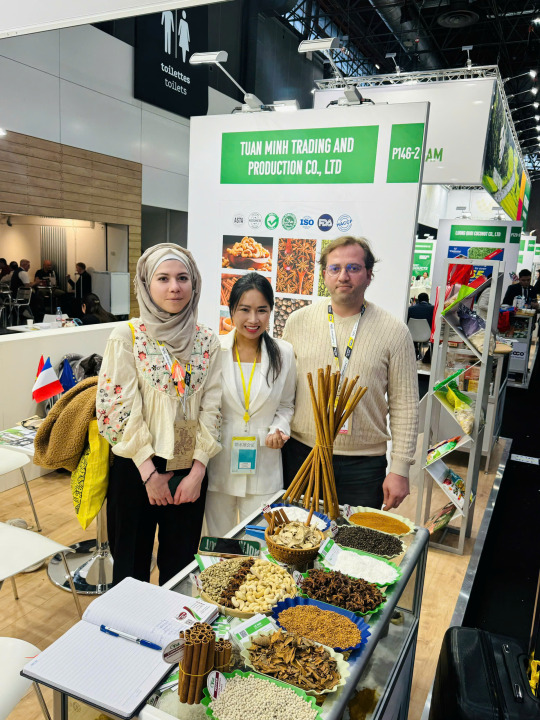
View On WordPress
0 notes
Text

Tuấn Minh Trading brings Vietnamese agricultural products to SIAL Paris 2024
Tuấn Minh Trading & Production Co., Ltd. proudly showcases its premium products, including black pepper, cinnamon, star anise, desiccated coconut, and cardamom, at SIAL Paris 2024. With a commitment to quality and sustainable sourcing, we aim to connect with global partners and bring Vietnamese agriculture to the world.
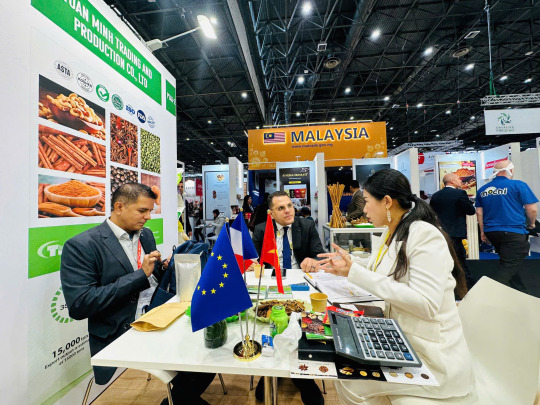
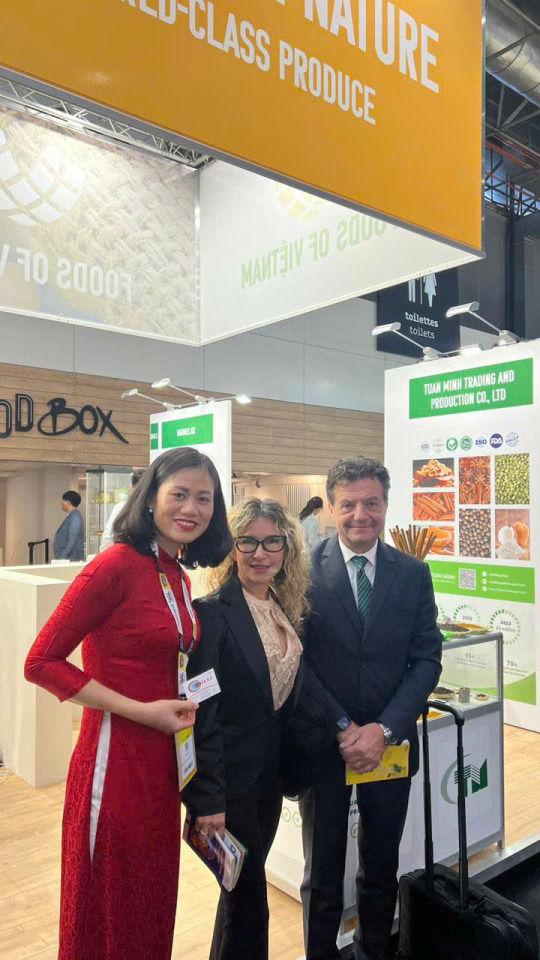
0 notes
Text
The Russia-Ukraine conflict has significantly impacted Vietnam's agricultural exports
The Russia-Ukraine conflict has significantly impacted Vietnam’s agricultural exports, particularly key products like pepper, cashew, ginger, turmeric, coffee, and coconut. Major challenges include supply chain disruptions, rising transportation costs, and difficulties in international payments due to sanctions on Russia. Here’s a breakdown of how each product has been affected: – Pepper:…

View On WordPress
0 notes
Text

The Russia-Ukraine conflict has significantly impacted Vietnam's agricultural exports, particularly key products like pepper, cashew, ginger, turmeric, coffee, and coconut. Major challenges include supply chain disruptions, rising transportation costs, and difficulties in international payments due to sanctions on Russia. Here's a breakdown of how each product has been affected:
- Pepper: Exports to Russia and Ukraine have sharply declined due to logistical and payment difficulties. Businesses have shifted focus to new markets like the Middle East and Europe to compensate.
- Cashew: Export volumes to these markets have dropped significantly. Companies are turning to the U.S. and China to maintain sales.
- Ginger and Turmeric: These products haven't been heavily impacted by the Russia-Ukraine markets, but increased transportation costs have reduced profit margins.
- Coffee: Russia, a key market, has seen disruptions in exports, leading to higher costs. Exporters are shifting to Europe and the U.S. to mitigate losses.
- Coconut: Coconut exports to Russia face logistical challenges, but Vietnam maintains strong demand in China and ASEAN countries.
In summary, while the war has caused considerable disruptions to Vietnam's agricultural exports, businesses are adapting by exploring new markets and finding ways to minimize losses.
#VietnamAgriculture#RussiaUkraineWar#PepperExports#CashewExports#CoffeeExports#GingerTurmeric#CoconutExports#SupplyChainDisruption#GlobalTrade#MarketShift
0 notes
Text
Price Trends in Coffee, Coconut, Turmeric, and Cardamom
Agricultural products such as coffee, coconut, turmeric, and cardamom are essential for both domestic and export markets. Their prices are heavily influenced by harvest seasons, supply chain conditions, and global economic fluctuations. 1. Coffee – Harvest Season: Robusta coffee in Vietnam, one of the largest producers, is harvested from October to December, while Arabica is harvested in Brazil…
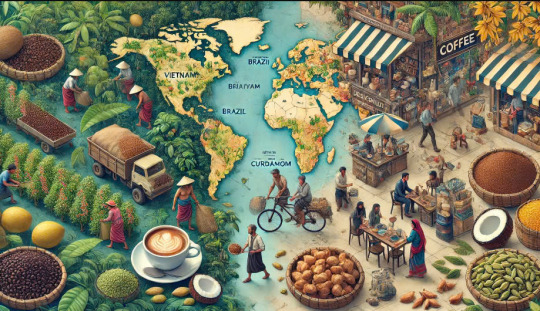
View On WordPress
0 notes
Text

Agricultural products such as coffee, coconut, turmeric, and cardamom are essential for both domestic and export markets. Their prices are heavily influenced by harvest seasons, supply chain conditions, and global economic fluctuations.
1. Coffee
- Harvest Season: Robusta coffee in Vietnam, one of the largest producers, is harvested from October to December, while Arabica is harvested in Brazil and Colombia from May to September.
- Consumption Season: Coffee is consumed year-round, with demand peaking in winter in Europe and the U.S., driven by the colder climate and a higher preference for warm beverages.
- Prices: Coffee prices are influenced by factors like weather, production output, and consumer demand. In 2023-2024, coffee prices rose due to high demand but reduced yields in major growing regions, exacerbated by supply chain disruptions.
2. Coconut
- Harvest Season: Coconut can be harvested year-round, with peak harvest from May to August. Vietnam is a key producer and exporter.
- Consumption Season: Desiccated coconut and coconut water are highly consumed during the summer, especially in the food processing and beverage industries.
- Prices Coconut prices fluctuate based on harvest output and consumption patterns. In 2023, coconut prices, especially for desiccated coconut, surged due to supply shortages, driven by increased demand during the summer.
3. Turmeric
- Harvest Season: Turmeric is harvested from September to December, with a growing cycle of 7-9 months. It is widely cultivated in India and Vietnam.
- Consumption Season: Turmeric is consumed year-round, with higher demand in winter and in the medicinal industry, given its anti-inflammatory properties and health benefits.
- Prices: Prices for turmeric fluctuate based on global demand, especially in the pharmaceutical and food sectors. Indian turmeric often commands a premium price due to its superior quality, and prices rise in years with unfavorable weather conditions that limit supply.
4. Cardamom
- Harvest Season: Cardamom is harvested from August to December, primarily in India, Nepal, and Vietnam.
- Consumption Season: Cardamom sees increased demand in winter for use in warm dishes, medicinal products, and beverages. It is also in high demand in Europe and the Middle East.
- Prices: Cardamom prices tend to be high, particularly in export markets like Europe and the Middle East. Prices rise in winter, when demand peaks, combined with long production cycles and high transportation costs.
Market Overview and Price Forecast
The prices of these agricultural products are highly dependent on harvest cycles, market demand, and external factors like weather and global economic conditions. Peak harvest seasons often lead to lower prices due to ample supply, but factors such as natural disasters, conflicts, or supply chain disruptions can drive prices higher. Understanding these cycles helps farmers and businesses adjust their production and marketing strategies to optimize profits in volatile markets.
#CoffeeMarket#CoconutPrices#TurmericTrade#CardamomExport#AgricultureAnalysis#HarvestSeason#GlobalAgriculture#FoodProcessing#SpiceIndustry#SupplyChain#FarmersMarket#AgricultureEconomy#CommodityPrices#GlobalTrade


1 note
·
View note
Text
Economic Impacts of Global Conflicts on Transportation, Agriculture, and Raw Material Prices
The ongoing wars around the world are not only causing political and security instability but also have profound economic impacts, particularly on transportation costs, agriculture exports and imports, and the prices of raw materials and food industries, including spices. Below is an overview of how these conflicts are affecting these sectors: 1. Transportation Costs: The Russia-Ukraine war, one…
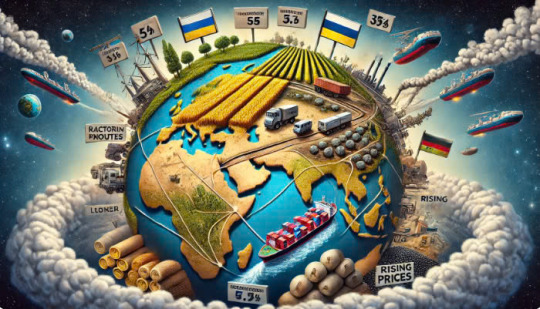
View On WordPress
0 notes
Text

The ongoing wars around the world are not only causing political and security instability but also have profound economic impacts, particularly on transportation costs, agriculture exports and imports, and the prices of raw materials and food industries, including spices. Below is an overview of how these conflicts are affecting these sectors:
1. Transportation Costs: The Russia-Ukraine war, one of the most severe current conflicts, has disrupted key shipping routes in the Black Sea. This disruption has led to a sharp increase in transportation costs as ships are forced to take longer, safer routes. The rise in fuel and insurance costs has also contributed to the overall surge in logistics expenses.
2. Agriculture Exports and Imports: Ukraine, as one of the world's largest exporters of wheat and corn, has been heavily impacted by the war with Russia. The conflict has reduced agricultural production and severely restricted exports, leading to global food shortages. Countries that rely on Ukrainian grain are facing significant challenges in securing alternative supplies.
3. Agricultural Prices: The disruption in Ukraine’s agricultural supply has driven up global food prices. Countries like India and Brazil, also major agricultural exporters, are facing increased production costs due to the shortage of fertilizers from Russia and Belarus, further pushing up food prices worldwide.
4. Fertilizer Prices: Russia and Belarus are critical suppliers of key fertilizer components such as potash, nitrogen, and phosphorus. The war and ensuing sanctions have disrupted these supplies, causing fertilizer prices to spike globally. This has increased production costs for farmers, affecting crop yields and driving up food prices.
5. Raw Materials for Manufacturing: The conflicts have disrupted the supply of raw materials like metals and energy resources. Manufacturing industries, especially steel, aluminum, and energy, have seen their production costs soar due to raw material shortages. For instance, the war in Sudan, a country rich in mineral resources, has hampered mining activities, affecting the global supply of these materials.
6. Food and Spice Industries: Nations like India, which are major producers of spices such as pepper and cinnamon, are also facing higher costs due to fertilizer shortages and increased transportation expenses stemming from global conflicts. This has resulted in rising prices for spices and other food products in international markets, impacting both consumers and businesses.
From Europe’s Russia-Ukraine war to Africa’s conflicts in Sudan, these wars are causing widespread disruptions in global supply chains. They not only affect transportation logistics but also increase costs and limit the availability of agricultural products, fertilizers, raw materials, and food items. These sectors are grappling with higher production costs, material shortages, and challenges in maintaining stable output amid such global unrest.
#GlobalConflicts#WarImpact#AgricultureDisruption#SupplyChainCrisis#FoodIndustry#TransportationCosts#RisingFoodPrices#FertilizerShortage#RawMaterialCrisis#EconomicImpact#GlobalTrade#SpiceMarket#CommodityPrices#LogisticsChallenges#AgriculturalCrisis
#GlobalConflicts#WarImpact#AgricultureDisruption#SupplyChainCrisis#FoodIndustry#TransportationCosts#RisingFoodPrices#FertilizerShortage#RawMaterialCrisis#EconomicImpact#GlobalTrade#SpiceMarket#CommodityPrices#LogisticsChallenges#AgriculturalCrisis
0 notes
Text
Vietnam’s Ginger Export: 2024 Price Trends and 2025 Market Forecast
Analysis and Forecast of Vietnam’s Ginger Export Prices (January – September 2024) The chart shows that Vietnam’s ginger export prices rose from 0.82 USD/kg in January to 1.23 USD/kg in September, reflecting steady growth driven by high demand in major markets like the U.S., India, and the UAE. Vietnamese ginger is increasingly favored for its quality and competitive pricing. Forecast for…
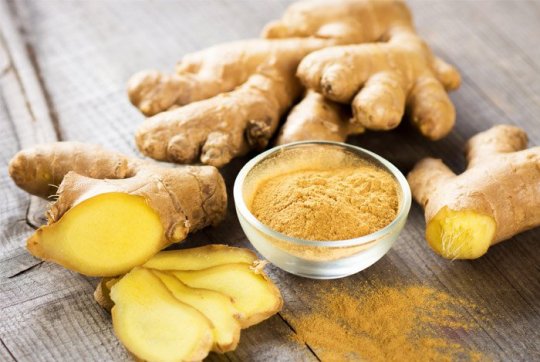
View On WordPress
0 notes
Text

Analysis and Forecast of Vietnam's Ginger Export Prices (January - September 2024)
The chart shows that Vietnam’s ginger export prices rose from 0.82 USD/kg in January to 1.23 USD/kg in September, reflecting steady growth driven by high demand in major markets like the U.S., India, and the UAE. Vietnamese ginger is increasingly favored for its quality and competitive pricing.
Forecast for 2025
- Price: Export prices are expected to continue rising, potentially reaching 1.3 - 1.5 USD/kg due to sustained demand and climate-related supply challenges.
- Market: Vietnam has potential to expand exports to new markets like the Middle East and Europe, where ginger is widely used in food and healthcare.
Vietnam’s ginger sector is poised for strong growth. Investing in quality and product diversification will further solidify Vietnam's position in the global spice industry.
#VietnamGinger#GingerExport#SpiceMarket#VietnamAgriculture#2025Forecast#GlobalSpiceTrade#GingerPrices#ExportGrowth#MiddleEastMarket#EuropeanMarket#SustainableAgriculture

0 notes
Text
Vietnam’s Turmeric Export: 2024 Trends and 2025 Market Forecast
Analysis of Vietnam’s Turmeric Export Price and Volume (January – September 2024) and Forecast for 2025 From January to September 2024, Vietnam’s turmeric export price increased from 3.5 USD/kg to 5.0 USD/kg, with export volumes rising from 1,200 to 1,550 tons. This upward trend reflects growing demand from major markets like the U.S., China, and Japan, where Vietnamese turmeric is valued for…

View On WordPress
0 notes